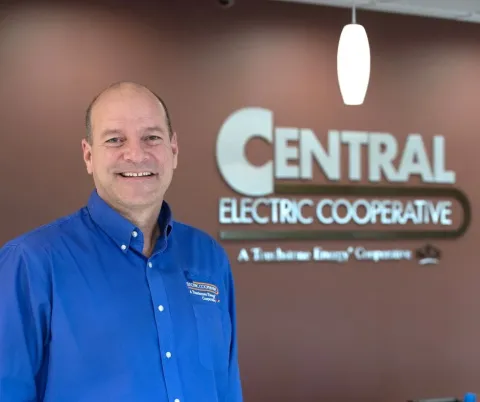
Thank you to everyone who attended this year’s district meetings. Attendance was very similar to previous years, and I hope the exchange of information was educational and appreciated. One topic we spent a great deal of time discussing was electric demand and how it impacts your cooperative.
Electric “demand” refers to the rate at which you use electricity, measured in kilowatts (kW). Similar to how a speedometer measures your vehicle’s speed, an electric meter measures the speed at which you use electricity in a specified period of time. Higher demand requires larger infrastructure to deliver electricity when needed. Think of it as the “size of the pipe” delivering electricity — a bigger pipe costs more but can deliver more power instantly.
Understanding the difference between immediate electricity needs and total usage over time is important. Imagine filling a swimming pool. You could use a fire hose and fill it in minutes or a garden hose and fill it in hours. Both deliver the same amount of water, but the speed is different, requiring different infrastructure investments.
Demand charges for commercial and industrial members have long been part of our cooperative’s history. To meet both instantaneous and long-term needs, commercial accounts are subject to an energy charge (total electricity used over time) and a demand charge (speed of power delivery).
Central Electric residential and small farm members have yet to see demand charges on their monthly statements. This is because the cooperative lacked efficient technology to measure demand, and residential electricity usage patterns were relatively similar. Typically, we wake up, take a hot shower, go to work, come home, turn on the lights, cook dinner, watch TV, wash laundry and go to bed. With similar usage patterns, energy and demand charges were combined into one price per kWh. These customers have always been paying for demand despite it not being itemized on the monthly electric bill.
For the past 15 years, your cooperative has had the technology to measure demand on every meter. Starting in July, your cooperative will include demand information on all electric bills. There will be no charges for demand on residential and small farm accounts initially. For now, our hope is this information will educate our members about their impact on the electric system. Like many cooperatives nationwide, we are considering phasing in residential demand charges in the future.
Demand charges allow your cooperative to more fairly cover infrastructure costs and encourage members to reduce system strain through load shifting and peak management. Our long-term goal is to reduce the cooperative’s infrastructure investments and keep everyone’s electric costs low. By understanding and managing electric demand, we can work together to keep our electricity reliable, affordable and sustainable.
Find more information about electric demand on by visiting www.centralec.coop/demand. Until next month, stay safe!
